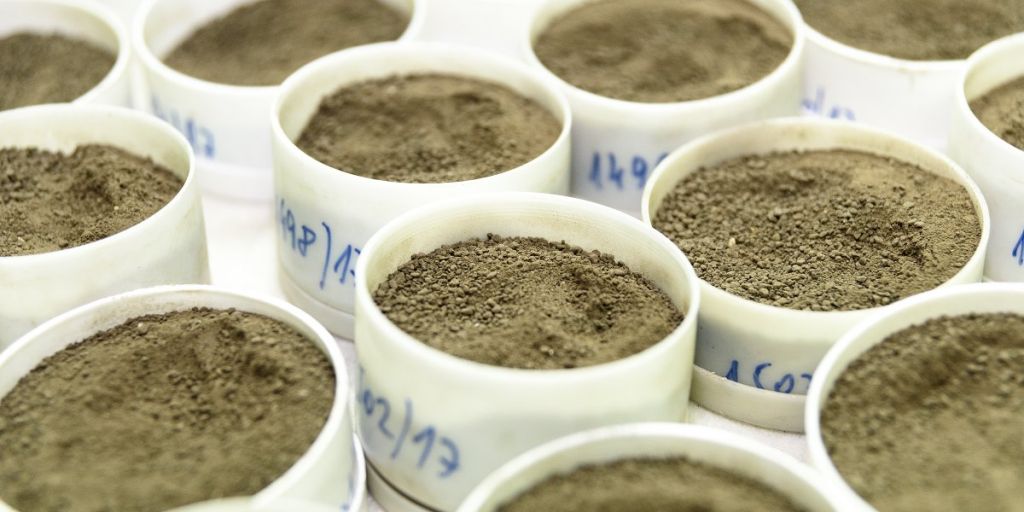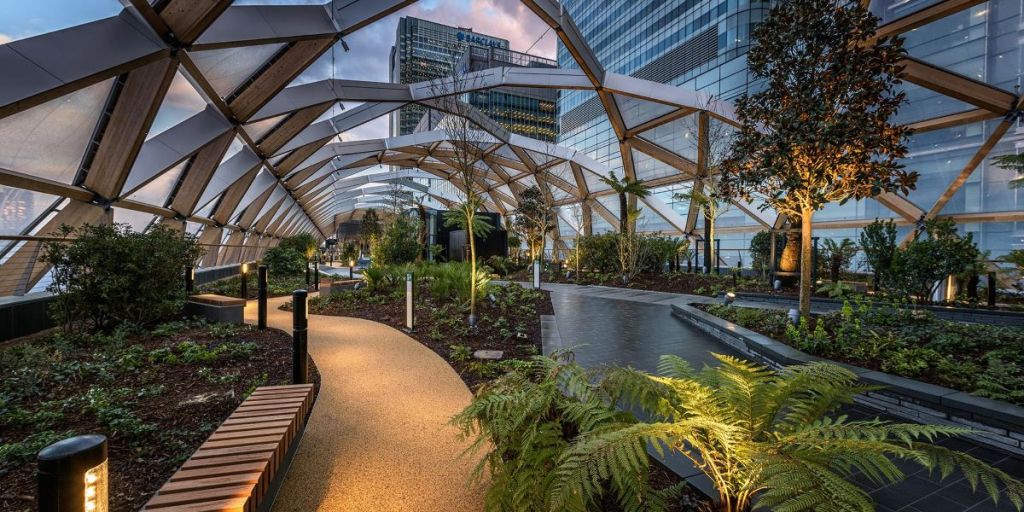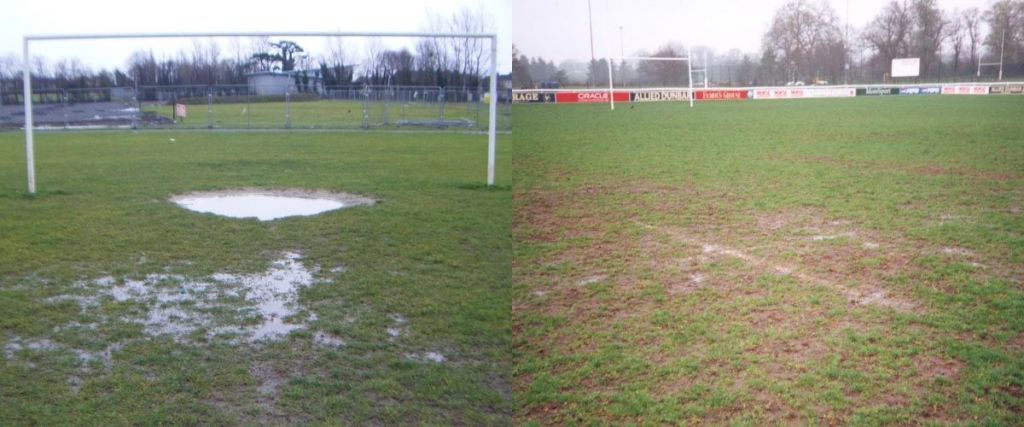
The increased scrutiny of materials such as topsoils, driven primarily by the 2012 Olympic project, has for the most part been hugely advantageous for the landscaping industry, leading to large improvements in quality and accountability within a largely unregulated sector. However, when we are buying and selling materials that are as alive as the plants and shrubs they support, where does the supplier’s responsibility for the performance and quality of the material end? Over time, key elements such as pH, NPK and porosity levels are likely to fluctuate – so is there a liability when schemes and/or plants begin to underperform?
There is no doubt that the standard of soft landscaping materials has improved since 2012. Bourne Amenity’s budget for testing materials has quadrupled since the early Noughties, and we welcomed increased focus on compliance with specifications as a sign that our efforts to improve standards were becoming universal. However, projects are becoming more and more ambitious in increasingly inaccessible locations (e.g. rooftops). In those circumstances, if materials and substrates started out fulfilling a specification but deteriorate after delivery, storage and spreading, who is responsible for the costly remedy?
Our position has always been that – alongside our own regular testing protocols – we advise every contractor to employ independent testers to visit and sample from our facilities, in order to produce data that is relevant to a particular project and subsequent batch of material. Once the material has been approved, any issues from that moment onwards cannot be due to our processes. If, for example, the soil is handled poorly (most specifications outline the ideal handling methodology) during onsite preparations, or there are traces of contamination that were not present in the original samples, the accountability stops at the moment our material has been discharged on site. In cases where an onsite test has thrown up an irregular reading of, say, asbestos, it is more often than not a hangover from the original brownfield site. It is then the responsibility of the contractor to determine its origin.
The problem lies in allowing time for the testing and approval process. A standard BS 3882 topsoil test is likely to take seven to 10 days. If you include asbestos, lands must wait for the asbestos result to come back before further tests can take place. Consequently, you are looking at close to three weeks for the standard multipurpose BS 3882 topsoil test. The test will then only be valid for that batch (usually around 500m3), and once it is used up, another test must be undertaken, causing a further delay. More often than not, contractors are relying on old data relating to a batch of material that will never be delivered to their site. Suppliers are hard pressed to blend and store numerous 500m3 batches of material, due to storage limitations. It is therefore important for contractors and buyers to include cost and time provision for independent testing in their plan of works, and to ensure the supplier can store the required number of batches.
Many projects include subsequent tests once the material is in situ, and in these cases, the accountability of the testing process is crucial in the event of any discrepancy. If you cannot trace the test results to the same batch of material that was delivered to site, this is where arguments over accountability will surface.
As a company, we have learned to be extra vigilant when enforcing the rule that, once the material is discharged on site, it is no longer our responsibility. Arguments can occur when performance materials are badly managed on site, leading to an adverse effect on performance. Suppliers must ensure that material is compliant when it leaves their facility and upon discharge, responsibility passes to the client.
(This article originally appeared in Pro Landscaper magazine, July 2018, and is reproduced by kind permission from the publisher, Eljays44 Ltd.)

(This article first appeared in the ProLandscaper Podium Landscapes supplement, published 21 February 2018.)
Bourne Amenity was first enlisted to blend a soil for podium planting back in 2007. We were challenged to come up with a lightweight solution to help reduce the load burdening, while maintaining the topsoil’s structural and nutritional integrity. The usual field bulk density of our topsoils at field capacity is around 1,300kg per m³ and this had to be reduced to a working density somewhere below 1,000kg per m³. However, we didn’t see our first official specification for a podium planting medium, until 2012.
Podiums differ from roof gardens, as they don’t often have the depth of materials available due to the way they are engineered. They are usually car park roofs and haven’t been designed to take volumes of materials, or don’t have set drainage systems installed ready for the landscapers to finish the work. The trend has changed over recent years and we now see a greater need for greening large house builds, specifically in cities; it’s now taken into account at the design stage, allowing for better living environments and better designed drainage systems to ensure longevity.
Podium soils, where load bearing and drainage are primary concerns, are becoming popular among those designing urban schemes that need to comply with SuDS requirements, as well as satisfy demands for more green spaces in densely populated areas. We have seen projects, such as Thomas Heatherwick’s 1,000 Trees scheme in Shanghai, which look to make the most of urban space with an abundance of living roofs and walls. Space is at a premium, so designers are looking for innovative ways to reproduce full planting schemes, with limited space and weight demands.
To make a naturally heavy, sandy soil more lightweight, we experimented with various materials that have the desired effect without compromising the availability of nutrients or the integrity of the soil’s drainage capability. When blending soils, you must find a natural balance that suits the planting scheme and does not result in a material that has zero water retention and ends up drying out. There are various options available, from expanded clay pellets to crushed brick, and at Bourne Amenity we utilise both across our range of lightweight materials, for planting on podiums as well as roof tops.
By using single size sands and materials, such as Lightweight Expanded Clay Aggregate, you can reduce the topsoil compaction that usually accompanies the installation of these materials on congested inner city projects. The sand and the Lightweight Expanded Clay Aggregate opens the soil profile and allows for water and air to pass more freely throughout the soil layer, creating a healthier environment for plants and shrubs.
The blending ratio is key to maintaining the correct drainage-to-nutrient balance, and it’s crucial that soils perform across drainage and nutritional indicators, as well as bulk density. Ideally, the dry weight of your podium soil needs to be as low as possible, without compromising the structure or growing performance of the topsoil. Aim for around 800-850kg per m3 when the soil is bone dry. This will increase upon saturation, but manufacturers should aim for their material to not rise above 1,200kg per m3 when fully saturated. If the scheme is effective, then the material should never reach full saturation, but it is important to include the saturation figure in your analysis.
(You can find suitable podium soils on the Bourne Amenity website.)

The never ending stream of statistics showing increasing childhood and millennial obesity, and the rise of female sports participation will ensure a growing demand for pitch improvements at all levels.
Many local football and rugby clubs are devising more and more ingenious ways of funding pitch improvements, ranging from commercial sponsorship to landfill tax credits and governmental grants. The success of our recent open day held at Sevenoaks Town FC showed that there is growing interest on the part of regional football and rugby clubs in improving the playability of their pitches.
While the introduction of hybrid pitches at about 60% of the cost of a full 3G pitch is welcome, the cost of some £300k still represents a huge investment for a small club. In the rush for an artificial pitch of some form it is often forgotten that significant improvements can be made to a natural grass pitch to increase its availability at a more reachable price. This is particularly true of the clay based soils on which most local pitches are found.
The installation of piped drainage, enhanced by secondary drainage and a large dose of imported sand can, at a quarter of the price of an artificial pitch of any kind, provide the increased playability sought by small clubs. As an average, while undrained clay soils can sustain only 2/3 hours play a week, a fully drained pitch can stand up to 12 hours play. There is also the added benefit of reducing the number of cancelled fixtures, leading to better attendance figures and bar, refreshment and merchandise sales.
Central to this improvement, however, is the ongoing need to devote resources to maintaining the passage of water through the surface to the drainage system. There is no point installing a full drainage system unless regular efforts are made to ensure water gets off the surface and into the drains. Not doing so results in a waterlogged pitch and cancelled games. The same considerations, incidentally, also apply to the maintenance of artificial pitches – not looking after them can halve the expected lifetime of a carpet costing perhaps £150k.
All natural turf pitch construction specifications will include a requirement to spread at least 100 tonnes of sand on the pitch for the first 3 years after construction. This figure must be built into the capital cost of the project, even though the charge will be incurred over 3 years. This may not be easy for the supplier of the funds, but it has to be provided for by the club in some way. If not carried out, the surface will consolidate and the benefit of the improvements will be lost in a short period of time.
Similarly, regular pitch renovation work at the end of each season, including verti draining, sand spreading and overseeding will ensure that the drainage infrastructure put in at considerable cost will continue to provide the benefits. The extent of works required of course depends on the degree of damage to the surface, which in turn will be dependent on weather conditions through the season.
Clubs looking to invest in an enhanced drainage scheme as a way to accommodate more players must plan not only for ensuring that the three year post construction period is funded, but also that there is a sufficient ongoing income stream to cover annual pitch renovation work.



